
THERE’S a difference between driving without speed limits on a racetrack and on a public road. On a track you’re still policed by marshals with a sometimes over-enthusiastic attitude to your health and safety. You can mostly drive as fast as you’re able, but in tightly controlled conditions and only in circles.
A derestricted road is different. Your velocity is the product of a constantly shifting balance between the ability of your car, the condition of the road, your confidence and your duty of care to others. The sense of pure, unpoliced personal responsibility is as thrilling as the speed. You can explore the edges of your car’s ability rather than being confined deep within it. And when you find the edge you can stay there, if the road is long enough.

Other than the autobahn, I drove like this on the NT’s Stuart Highway back when it was still derestricted, flying halfway around the world from my home in the UK for the privilege. But I’d never been to the second most-famous venue for limit-free driving, despite the fact that it’s considerably closer. So when BAC rang and asked if I’d like to drive the Mono on the Isle of Man, I gave them an insta-yes.
The opportunity to drive a Mono is even rarer than the chance to drive on derestricted roads. Brothers Neill and Ian Briggs have built more than 90 cars since 2012 at a factory near Liverpool, but BAC is not yet rich enough to run a fleet of its own cars. There’s one development hack with the old engine and chassis, and one owned by a client who lends it back to the brothers for test drives and events. This would be my transport when I joined an event on the island with a group of paying Mono owners.
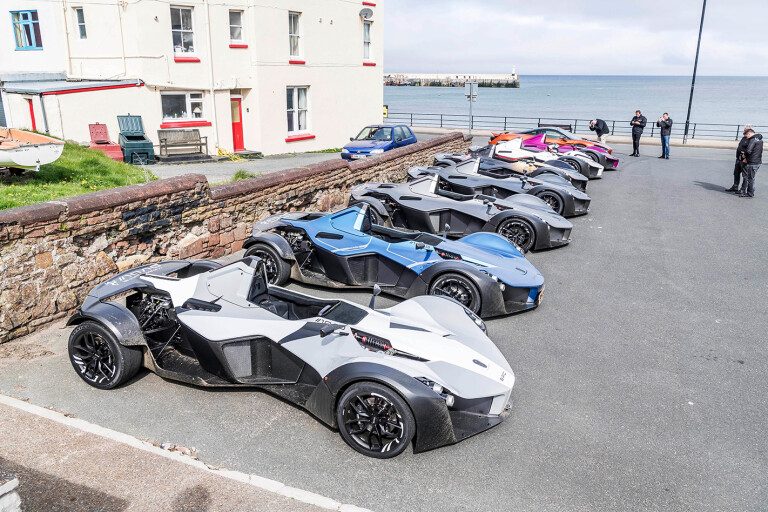
The Isle of Man is one of the few places unconquered by the flat white. It isn’t part of the UK but it revels in its preservation of a Britain which has faded away almost everywhere in actual Britain. Its country roads have stayed derestricted not because of a national devotion to hooning, but just because they’ve always been that way, and because without the free-spending drivers and bikers who come here for the TT races and the open-limit roads, the island’s tourist trade would dwindle even faster.
We’re met at the hotel by Inspector Mark Newey, the island’s chief traffic cop, who has come to give us a ‘friendly briefing’ before the driving starts. It’s odd to hear a cop tell you that you can drive as fast as you like on his roads, but Mark is still here to tell us to obey the law: there are just slightly fewer laws. Excessive speed where there are limits, or dangerous driving anywhere will still get us prison time and a five-year ban from the island.
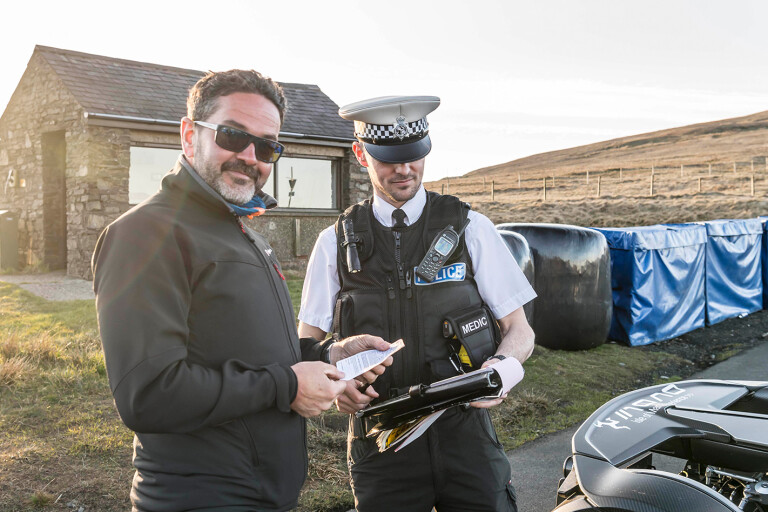
The cars are parked outside the hotel and are drawing a crowd. You’ll seldom see seven together. Individually, they are surprisingly beautiful for such a functional object. The bodywork is pulled taut between the hard points of the chassis like a desert nomad’s tent – there’s enough skin to provide the necessary cover, and no more. In plan view the Mono looks like a teardrop, or a tadpole; the broad front bodywork tapering sharply to allow you to step into the single seat in the middle, then narrowing to a point over the engine. It has no sides to speak of – the air rushes straight through the front wings to a pair of radiators angled behind the driver’s back, and behind them there’s just the engine and the gearbox.
That dramatic plan view means your perception of the car changes with angle. Head-on, it looks wide and menacing, but as you move around to the front three-quarters the front wheel hides what little bodywork there is, so the rear looks lighter than air; just a carbon wing and the squiggle of thin black pushrods and drive shafts connecting the rear wheels to the gearbox. And don’t confuse the Mono’s race-car minimalism with any lack of thought – there are endless clever details, like the artful integration of the rear lights into the wing, or the little suede platform for your helmet ahead of the cockpit. The hybrid carbon-composite wheels and the use of graphene in the rear wheel arches are both world firsts. When it rains you can always just look at it.

You step onto the weatherproof leather and suede seat and slide your legs down to the gorgeous aluminium pedal box, having first remembered to take the wheel and your helmet, if you’re wearing one, from the little locker in the nose. Cabin storage is a pair of tiny zippered pockets just ahead of your shoulders. There are no cupholders. By your left knee there’s the isolator and a dial to adjust the traction control, and by your right the extinguisher and the brake bias knob. But the F1-alike wheel carries most of the controls, including some that Lewis’s doesn’t have, like a park brake, indicators and horn.
If you think that we’ve become too removed from the oily bits of our cars, too obsessed with user-interfaces and semi-autonomous driving, the Mono is the antidote. You feel, hear and smell everything. The four-pot naturally aspirated Ford-block engine is now from Mountune rather than Cosworth, displacing 2.5 litres rather than 2.3 and with power up 19kW to 227kW. It wakes with an angry, dieselly clatter and because it’s a stressed member bolted directly to the Mono’s carbon-panelled steel spaceframe its vibrations buzz your back and bum, and penetrate deep into your thorax when it’s working harder.
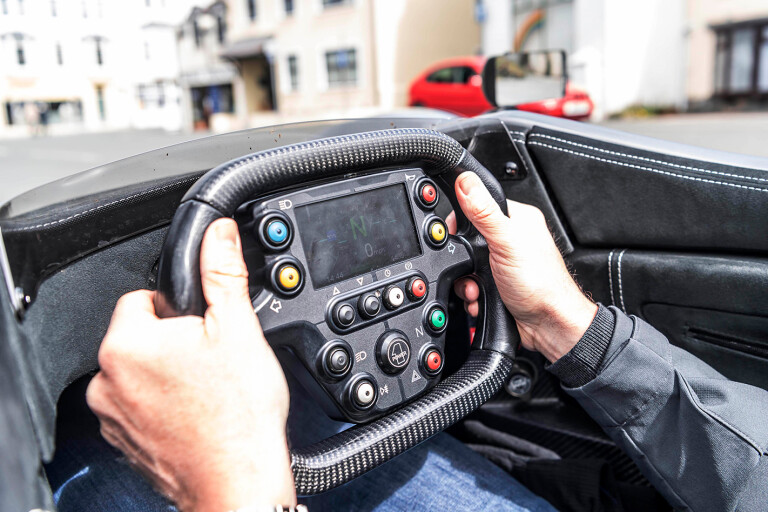
Same for the gearbox. You can hear the weird sucky noises of the six-speed Hewland’s hydraulic actuators, and first gear goes in with sufficient force to jolt this 580kg car like it’s been rear-ended at 5km/h.
There are three pedals down there but the clutch is only required when pulling away – which you can do without the throttle – and to shift below 3000rpm, the slightest dip of the left pedal easing the gear in. It’s surprisingly easy to trickle the Mono around town – the Briggs brothers bill this as a road car and not a track-day special, confident that it has the compliance to cope with public roads and knowing that its performance will feel more extreme in the real world.
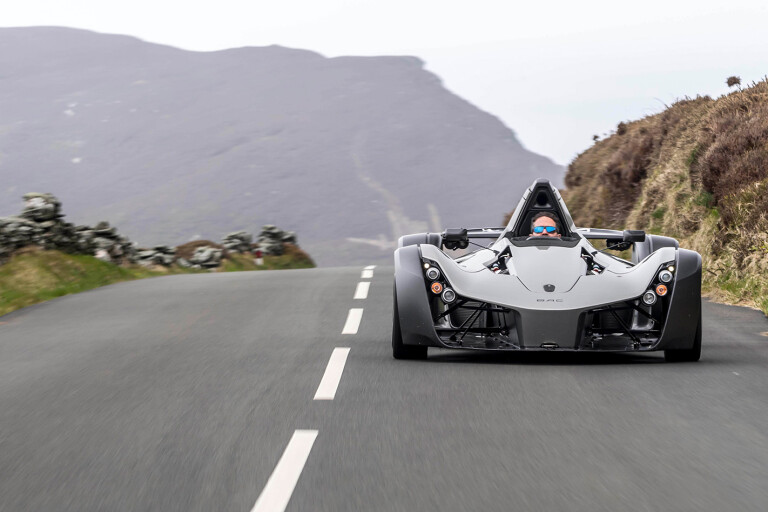
I was more worried that even the derestricted roads of the Isle of Man might not cope with the Mono. I’d expected them to be like a public day at the Nordschleife, with every corner providing a near-miss between a coach or a diesel hatchback and a red-mist lunatic on a superbike. But in fact they’re like most British country roads, your speed kept in check by Manx drivers for whom the novelty of open limits wore off long ago and now drive at 65km/h everywhere. The roads are great, though; fast, scenic, open and often as smooth as the race-tracks some of them become for a few days each year. I was there just before the TT, the glorious, perilous insanity of that race made apparent by the token crash pads which were being attached to trees and lamp-posts as I passed. They wouldn’t break your fall in the school high jump, let alone in a 300km/h crash.

This place can have sunshine on one coast and the blackest storm on the other, and I mainly seemed to find the latter. But I could still start to push on in the Mono, freed of the need to scan for cops or cameras. Like any other racing car it only starts to cohere with speed and load, the gearchange being the most noticeable example. Between 3000 and 5000rpm you don’t need the clutch but each change still smacks you in the back of the head like a school bully. Above that it’s just slick and instant, your head giving the curtest nod, as if in agreement.
Racing engines are as functional as a Honda generator, their function being to make you go fast. Sounding good is an accidental by-product and not guaranteed. This one hasn’t been for the expensive voice-coaching an Aston or Ferrari engine gets. Its hard, mechanical blare is exciting, but mainly because it’s so freaking loud, and because the vibrations make you feel like it’s trying to eat its way into the cockpit.

At a middling pace you notice how compliant the adjustable Sachs pushrod suspension is – the ride doesn’t tire you, and you don’t worry about broken surfaces breaking your traction or making the front end skip. As you go faster you focus on the vice-like mechanical grip. The Mono is unlike anything else I’ve driven on the road. It arcs through corners like that compass from your high-school days; you dial in the radius and it draws it without deviation. It felt as if only my shoulders failing would cause it to understeer.
But I was still driving mostly as I would in the UK, at the speed limit plus the tolerance of a reasonable copper, my pace limited on these high mountain roads by the thick bands of cloud that wreathe them and occasionally race across them. But then, in the quieter south of the island, the clouds finally lifted. I could see clearly out between two tors to the mottled navy-opal blue of the Irish Sea. The sun fell over the green-gold moors and the road – known as the Sloc – that runs across them. A series of short, slightly downhill straights are separated by kinks and followed by a corner leading into series of sweeping bends cut into the hillside. It was empty and dry so for the first time I got all the way into the Mono’s throttle, hitting the limiter in second and third along the straights.

The noise and vibration and blast of the air made it feel insanely fast, and I’m sure it was – I didn’t look down at the speedo. But I backed off in fourth way before the corner because the pace was getting wildly inappropriate for the road. Through the bends the Mono maintains its death-grip on the road and lets you know it will go through here faster than almost anything else with number plates, yet social responsibility meant I was constantly feathering the throttle.
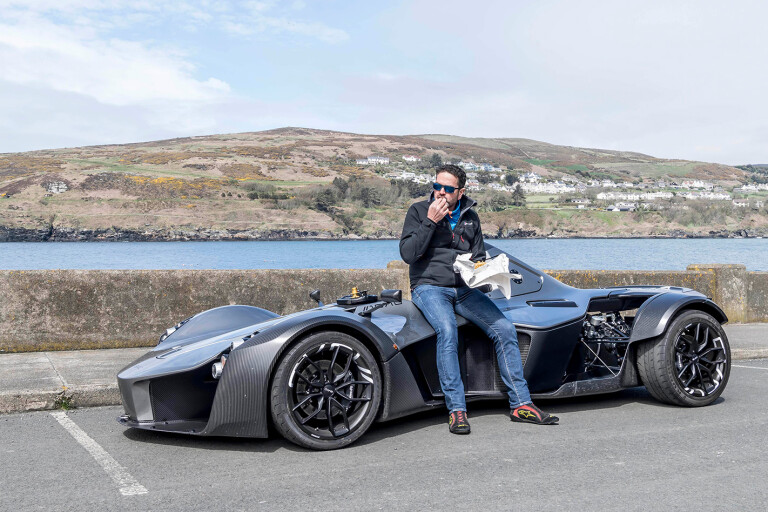
At the end of the day I parked up, switched the engine off and let the heat soak warm my back. I was the sort of tired my five-year-old gets when he’s been massively over-stimulated all day, like on his birthday or at a theme park, wide-eyed and spent at the same time. I wondered if I still wanted a Mono as much as I thought I did before I drove it. Despite the lack of limits, I’d got that same sensation of forced restraint and mild frustration at not getting anywhere near the edges of the bonkers, time-bending, physics-defying abilities of this car. The Briggs brothers are right – theirs is an extraordinarily capable road car. But it’s always more satisfying to extend a car than restrain it, and you’ll only ever really extend a Mono on a track.
And for all its clever engineering the Mono is primarily a functional object; a device for going fast. It has the price of a supercar, but not the finesse. Mono owners won’t care, though. They already have supercars. This one is for days when the Ferrari feels a bit too quiet, too soft in the front, too tame, too dull. And if it doesn’t feel that way now, it will after the Mono.

COMMENTS